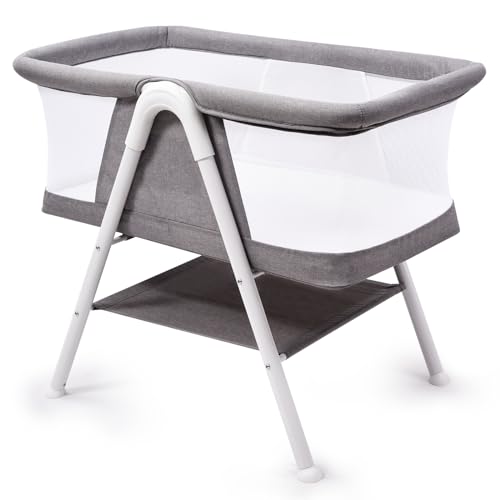Baby Cot Beds: The Perfect Haven for Your Little One
The arrival of a newborn brings enormous happiness and profound changes in way of life for any household. Among the most vital decisions parents face is choosing the ideal sleep environment for their baby. A baby cot bed is more than just a piece of furniture; it is a sanctuary where kids will spend a significant amount of their early years. This article looks into the numerous aspects of baby cot beds, including types, benefits, functions to think about, and responses to typical questions.
What is a Baby Cot Bed?
A baby cot bed, often referred to simply as a cot, is a little bed designed specifically for infants and toddlers. Unlike traditional cribs, cot beds can usually convert into young child beds or junior beds, making them versatile choices for growing households. The style and security measures carried out in baby cot beds make sure that babies have a safe and comfortable sleeping environment.
Kinds Of Baby Cot Beds
When selecting a baby cot bed, parents have a number of choices. Below is a table summing up the common kinds of baby cot beds available on the market:
| Type of Cot Bed | Description | Benefits |
|---|---|---|
| Standard Cot | A traditional design with fixed sides. Frequently includes adjustable mattress heights. | Affordable and space-saving. |
| Convertible Cot | Can change into a young child bed and even a full-size bed. | Grows with the kid, maximizing financial investment. |
| Portable Cot | Light-weight and collapsible; easy to transportation. Suitable for travel. | Convenience and flexibility for on-the-go households. |
| Moses Basket | A little, portable basket for babies, typically utilized for the first few months. | Easy to move your home and soothing for babies. |
| Cradle | A rocking bed designed to relieve infants to sleep. | Gentle motion can assist lull infants into slumber. |
Important Features to Consider
When selecting a baby cot bed, several crucial features need to be taken into account to guarantee safety and comfort. Here are some vital factors:
- Safety Standards: Ensure that the cot bed fulfills the pertinent security requirements set by regulative bodies. This certification guarantees the item's safety for babies.
- Product Composition: Look for cot beds made from non-toxic and hypoallergenic products. Solid wood options tend to be more resilient and safer than composites.
- Adjustable Mattress Height: Many cot beds come with adjustable bed mattress levels, permitting parents to reduce the bed as the child grows. Start with a higher position for babies and lower it for young children.
- Size: Consider the size of the cot bed in relation to the space readily available in your nursery. Cot beds usually are available in standard sizes, but confirm the measurements.
- Bed mattress Quality: The bed mattress ought to be firm and fit comfortably within the cot to avoid any spaces. Search for breathable products for improved air flow.
- Alleviate of Assembly: Choose a cot bed that is easy to assemble and take apart, especially if you plan to move it around your home or travel.
- Style & & Aesthetics: While security and performance are paramount, think about the style and surface of the cot bed to match your nursery decor.
Advantages of Using a Baby Cot Bed
A baby cot bed offers numerous benefits that contribute to a kid's well-being and convenience.
- Security First: Cot beds are developed with safety in mind, featuring strong sides and sound frameworks to avoid falls.
- Comfortable Sleeping Environment: The designated space encourages a great sleeping regimen, important for an infant's development and development.
- Versatile Options: Many cot beds convert into beds, enabling parents to utilize them for a number of years, which can be cost-effective.
- Reduce of Access: Revolutionary creates now enable parents quick access to their sleeping babies, alleviating feeding or calming.
- Visual Appeal: Cot beds been available in various styles and colors, improving the nursery's decor while providing a devoted space for the baby.
Regularly Asked Questions (FAQs)
1. At what age can I transition my baby from a cot to a toddler bed?
A lot of parents transition their children from a cot bed to a toddler bed when they reach about 2-3 years old. Signs may consist of climbing out of the cot or significant development.
2. How do I choose the ideal mattress for a cot bed?
Select a company bed mattress that fits comfortably in the cot bed frame. Ensure that it is made from breathable, hypoallergenic materials for optimum safety and comfort.
3. Are cot beds safe for newborns?
Yes, baby cot beds are created to keep newborns safe. Search for ones that fulfill security regulations and have features like adjustable heights.
4. Can I use a cot bed from birth?
Definitely! Numerous cot beds are designed to accommodate newborns, specifically those with adjustable bed mattress heights.
5. How can I guarantee my newborn sleeps securely in a cot bed?
To make sure safety, constantly position your baby on their back to sleep, prevent utilizing heavy bed linen or toys in the cot, and routinely check that the mattress fits snugly without gaps.
6. What materials should I avoid when picking a cot bed?
Avoid cot beds made from materials consisting of harmful chemicals or heavy finishes, such as lead-based paints or artificial materials that may emit toxins.
Choosing the right baby cot bed is one of the most crucial choices parents will make in preparation for their child's arrival. With various alternatives, safety features, and styles readily available, there is a best suitable for every family. By prioritizing safety, comfort, and style, moms and dads can produce a nurturing sleeping environment that will benefit their child for years to come. Whether deciding for experienced , portable alternative, or standard design, each option offers unique benefits that can accommodate the needs of growing households.

